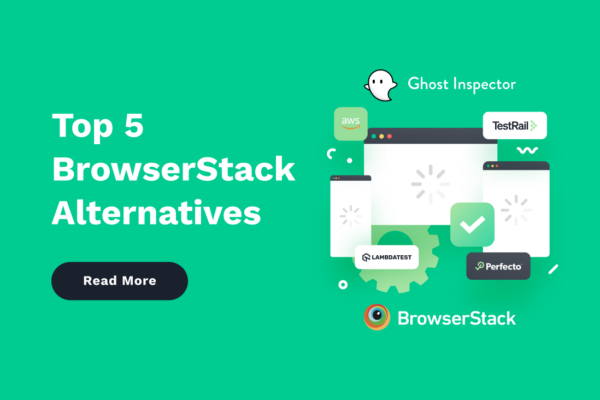BrowserStack is a popular web and mobile testing platform. While the cross-browser testing tool has been the go-to for Quality Assurance (QA) teams and product managers since 2011, many are now turning to other solutions to simplify and automate their testing processes.
But how do you pick the right BrowserStack alternative testing tool? Do you rely on user reviews, popularity, or the most budget-friendly option?
To help you answer these questions and choose the correct platform for your team, we’ll explore the features of the top five BrowserStack alternatives and provide key factors that will drive your decision.
Let’s get started.
Table of Contents
- What is BrowserStack?
- Top 5 Alternatives to BrowserStack
- How to choose the right BrowserStack Alternative
- The Best BrowserStack Alternative for Your Team
What is BrowserStack?
BrowserStack is a cloud-based testing platform that offers browsers, operating systems, and real mobile devices for developers to test their websites and mobile applications.
It allows teams to run manual and automated tests for functionality, design, and performance in different environments. QAs and developers can check if their digital products are running smoothly using actual mobile devices and browsers virtually instead of in-house testing infrastructure or emulators.
Key features:
- Real device cloud: Access to a large selection of real mobile devices to test applications and websites. Using real devices instead of emulators or simulators ensures that tests reflect actual user experiences.
- Cross-browser testing: The ability to test web applications across real browsers, various browser versions and types on Windows and Mac operating systems.
- Automated testing: Supports automated testing frameworks such as Selenium, Appium, and others, enabling developers to automate their processes for efficiency.
- Live testing: Allows developers to run manual tests on their websites in real-time across browsers and devices.
- Integrations: BrowserStack integrates with Continuous Integration and Continuous Delivery (CI/CD) tools, project management tools, and version control systems, making it easier to incorporate testing into the development workflow.
BrowserStack also offers visual testing, regression testing, and geolocation testing. While the platform provides comprehensive features, it might not fit every team’s unique testing or budgetary requirements. So, let’s take a look at some alternatives to BrowserStack.
Set up no-code tests in minutes with
Ghost Inspector
Our 14 day free trial gives you and your team full access. Create tests in minutes. No credit card required.
Top 5 alternatives to BrowserStack
Here’s our breakdown of the key features, uses, advantages, and disadvantages of the five best BrowserStack alternatives:
#1. Ghost Inspector
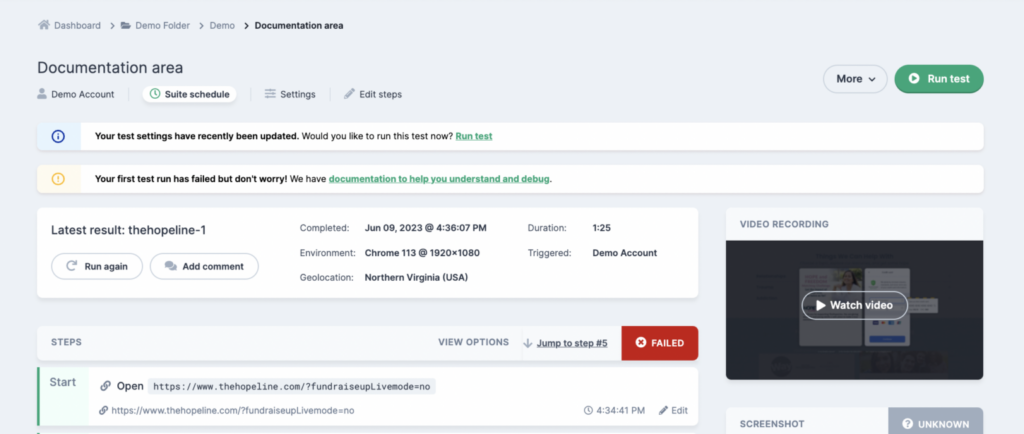
Ghost Inspector is a codeless automated testing tool that simplifies test creation and management for websites and web applications. Its user-friendly approach to test automation enables teams to implement comprehensive testing frameworks without extensive coding knowledge.
Key features:
- Easy-to-use visual test editor for quickly creating and editing automated tests without writing code.
- Seamlessly integrates with continuous integration and deployment pipelines, enhancing agile development practices.
- Automatic visual testing via screenshots and videos of tests.
- Provides detailed logs and step-by-step results for each test.
- Organize tests into suites, making it easier to manage and execute related tests together.
- Flexible notification and integration options, including email, Slack, and more.
- Schedule tests to run automatically at specified intervals, ensuring continuous monitoring of web applications.
- Users can set custom starting URLs, cookies, and screen sizes for each test, allowing tests to mimic various user states and environments accurately.
- Geolocation testing supported by 16+ global data centers
Let’s dig deeper and see how Ghost Inspector stacks up against BrowserStack.
Ghost Inspector vs. BrowserStack
While both solutions offer similar capabilities, Ghost Inspector has three critical advantages over BrowserStack.
First, it supports no-code automated testing, where developers or team members can use the drag-and-drop editor to create and execute tests quickly.
No-code testing increases accessibility for those with limited coding knowledge while reducing the work developers must do. This can boost test times while using fewer resources.
Ghost Inspector also allows you to run unlimited tests in parallel at no additional costs. This is a significant benefit as QA teams can run automation tests at scale without budget constraints, leading to a massive decrease in testing time and rapid releases.
By contrast, BrowserStack’s parallel testing requires additional payment. This limits the number of tests developers can run simultaneously, especially in smaller organizations with tight budgets.
Ghost Inspector is among the top alternatives to BrowserStack. It is suitable for organizations of all sizes. They have the features and pricing plans to support enterprises and small businesses alike — and aren’t afraid to show it.
Explore Ghost Inspector’s full capabilities with our 14-day free trial. Ready for a deeper dive? Schedule a Demonstration call to see how we can tailor our platform to your needs — or an Implementation call where we build your first few tests for you.
BrowserStack’s free trials are limited to 100 minutes of automated cross-browser and application testing, which might not be enough to judge the platform’s features or compatibility with your testing environment.
#2. LambdaTest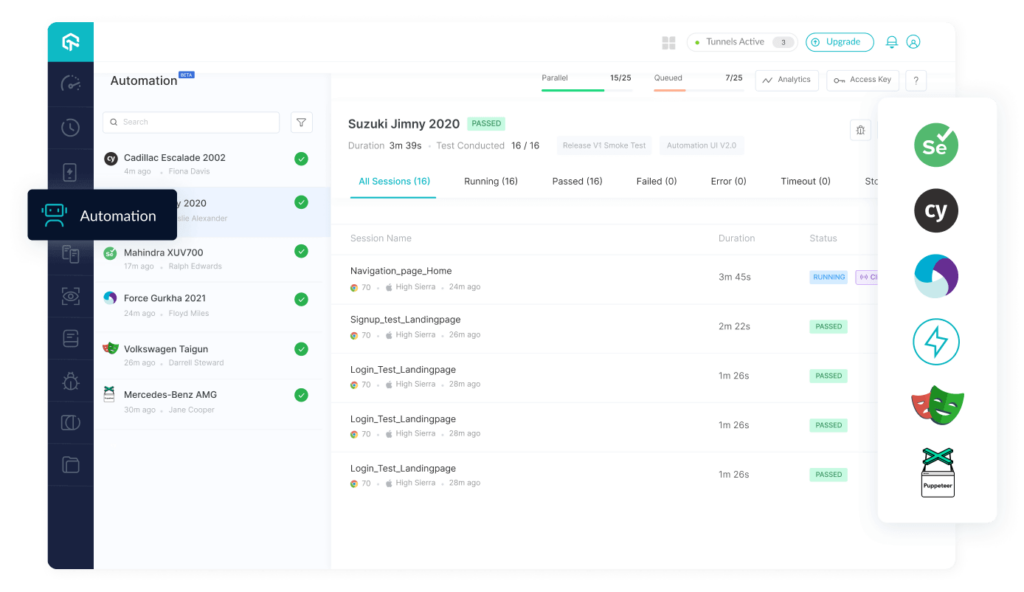
LambdaTest is a cloud-based cross-browser testing platform for web applications. It supports manual and automated testing, enables parallel testing, and integrates with bug tracking and project management tools.
Key features:
- Live interactive testing across over 2000 real browsers and various browser combinations.
- AI-powered automation platform that supports most major browsers, operating systems, programming languages, and frameworks.
- Support for automated Selenium script testing in multiple languages.
- Integration with CI/CD tools for seamless testing in development pipelines.
- Visual regression testing with automated screenshots and responsive testing tools.
- Real-time issue logging and collaboration tools for teams.
- The tunnel feature allows tests for locally or privately hosted applications.
LambdaTest does not support low-code/no-code tests by default but does support integrations with no-code platforms. The tool also charges extra based on the number of parallel tests.
#3. Browserling
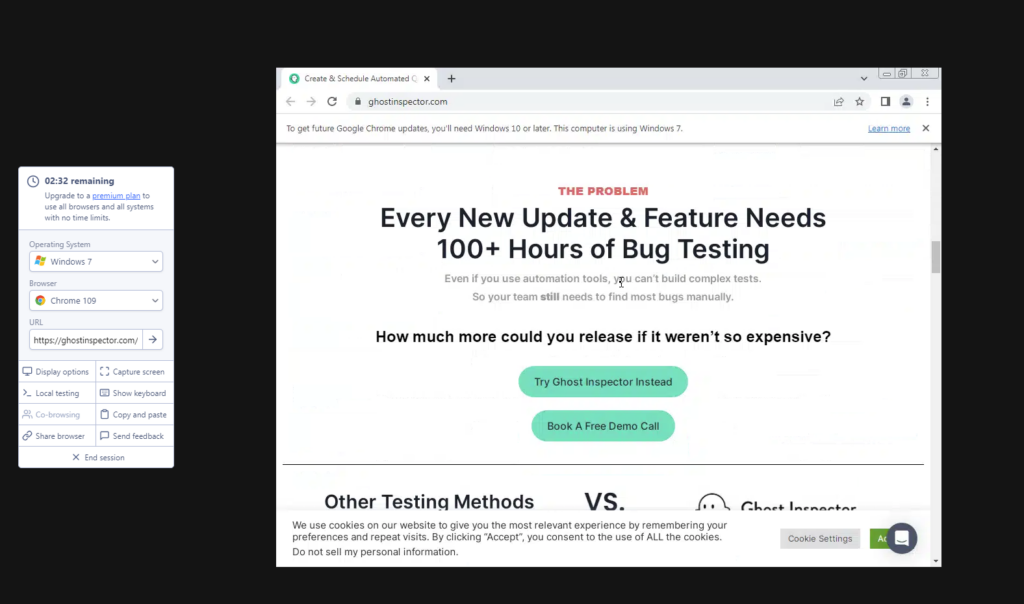
Browserling presents a straightforward solution for live interactive cross-browser testing. It focuses on simplicity, offering quick access to many popular browsers and operating systems without requiring complex setups.
Key features:
- Immediate access to a wide range of browsers and operating systems for live testing.
- Supports testing of publicly available and locally hosted websites and applications.
- Includes a feature for capturing screenshots across different browsers, aiding in visual testing.
- Ensures privacy and security during testing sessions with encryption and an online browser sandbox.
Browserling’s emphasis on ease of use is great for developers, but it lacks parallel testing and automation capabilities. It is not suitable for more advanced or automated testing scenarios.
#4. Selenium
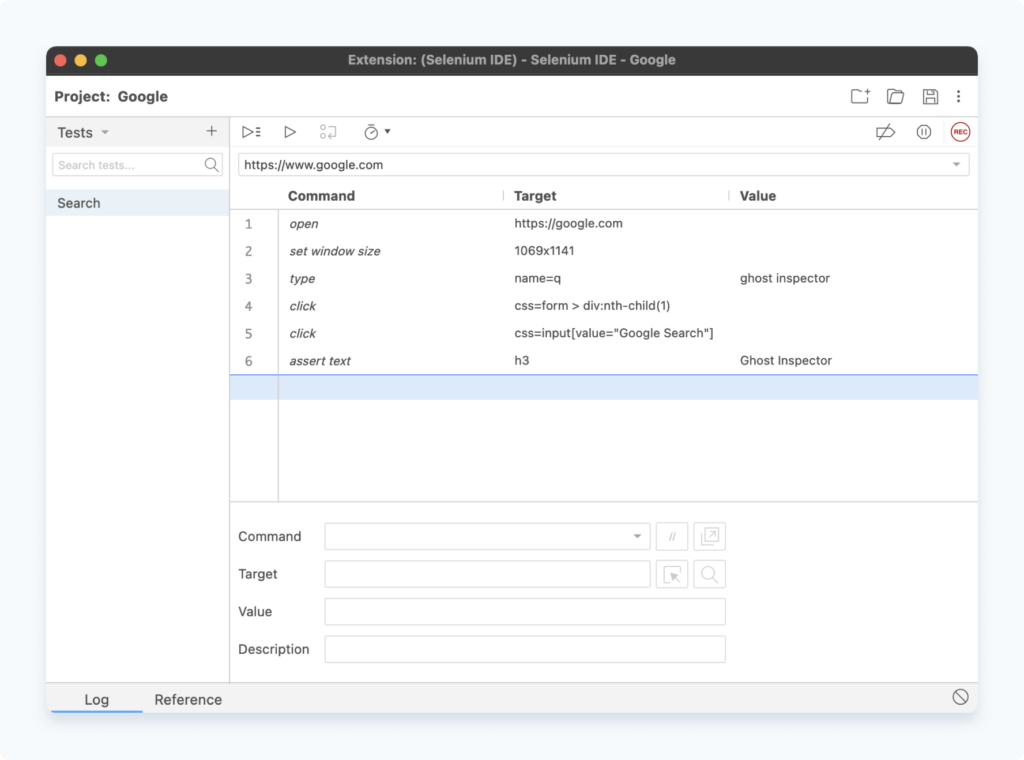
Selenium is a powerful, open-source software for automating web browsers. It enables developers to write scripts in many programming languages, offering extensive customization and control over the testing process.
Key features:
- Allows writing tests in multiple programming languages, including Java, C#, Python, Ruby, and JavaScript.
- Supports automated testing across web browsers.
- Integrates with many testing frameworks and tools for comprehensive test coverage.
- It has a large, active community that provides extensive documentation, tutorials, and support.
- Free to use and modify, making it an attractive option for teams looking to personalize their testing tools.
While Selenium offers extensive capabilities for automated testing, it requires a significant amount of coding knowledge, which can be a barrier for teams without programming expertise.
#5. AWS Device Farm
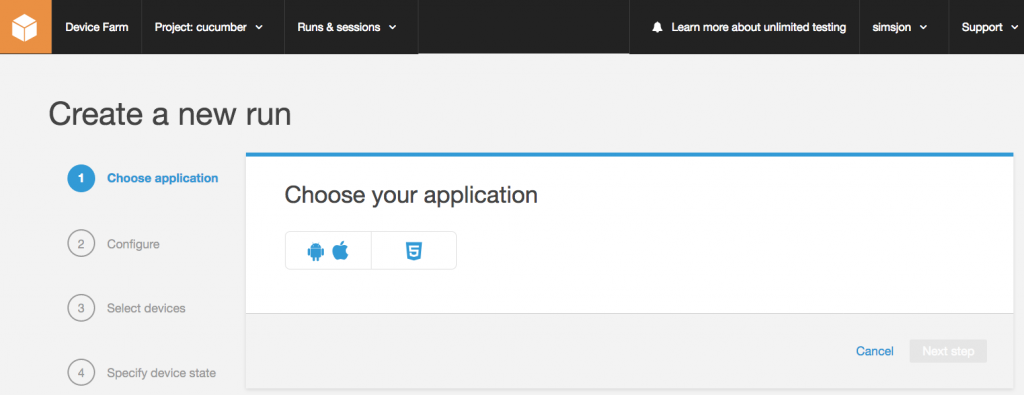
AWS Device Farm is Amazon’s solution for running web and mobile application tests across a wide range of operating systems and devices. It provides cloud-based access to physical devices, ensuring high-fidelity results.
Key features:
- Access to real mobile devices and tablets for accurate results via the cloud.
- Supports automated testing frameworks and manual interaction.
- Seamless integration with other AWS services, enhancing workflows and data analysis.
- Utilizes a pay-as-you-go pricing model based on device minutes, offering scalable solutions for projects of any size.
- Allows the configuration of custom environments, including device settings and network conditions, to simulate real-world scenarios accurately.
This platform is great for developers who are already using other AWS tools. However, its pricing model based on device minutes can become costly for extensive testing scenarios. Also, it might not provide the same simplicity and no-code capabilities as Ghost Inspector.
How to choose the right BrowserStack alternative
When selecting a BrowserStack alternative, consider the following factors to ensure the tool aligns with your testing requirements and workflow:
- Ease of use: Look for a user-friendly interface and features like no-code or low-code test creation, which can significantly lower the barrier to entry for team members and enable test setup in minutes.
- Compatibility: Evaluate the tool’s support for testing frameworks, browsers, operating systems, and devices, especially those most used by your target audience. Comprehensive coverage ensures your application performs well across a wide range of user environments.
- Integration capabilities: The tool should integrate seamlessly with your existing CI/CD pipeline, version control systems, and other tools used by your development teams to ensure a smooth workflow.
- Scalability and performance: Consider whether the tool can handle your testing volume and if it supports parallel testing to reduce execution time. This is crucial for teams looking to scale their testing efforts without compromising on speed.
- Support for automated and scheduled tests: Automated testing capabilities and the ability to schedule tests for continuous monitoring are essential for maintaining high-quality web applications.
- Cost-effectiveness: Assess the pricing structure to ensure it fits within your budget. This includes additional costs for parallel testing, access to real devices, or advanced features.
Evaluating the best alternatives to BrowserStack involves balancing these factors with your specific testing requirements, team size, and project scope.
The best BrowserStack alternative for your team
BrowserStack is a great testing platform, but it might not be the correct tool for your testers and developers. Choosing the right BrowserStack alternative depends on how complex your tests are, your team’s technical skills, and your budget.
But, given its features, ease of use, and automation capabilities, Ghost Inspector is the most reliable testing platform for QA teams and developers across industries. You can set up no-code tests in minutes, schedule tests, and run unlimited parallel tests for faster test completion.
Learn more about Ghost Inspector by booking a free demo or signing up for a 14-day trial today.
Set up no-code tests in minutes with
Ghost Inspector
Our 14 day free trial gives you and your team full access. Create tests in minutes. No credit card required.


